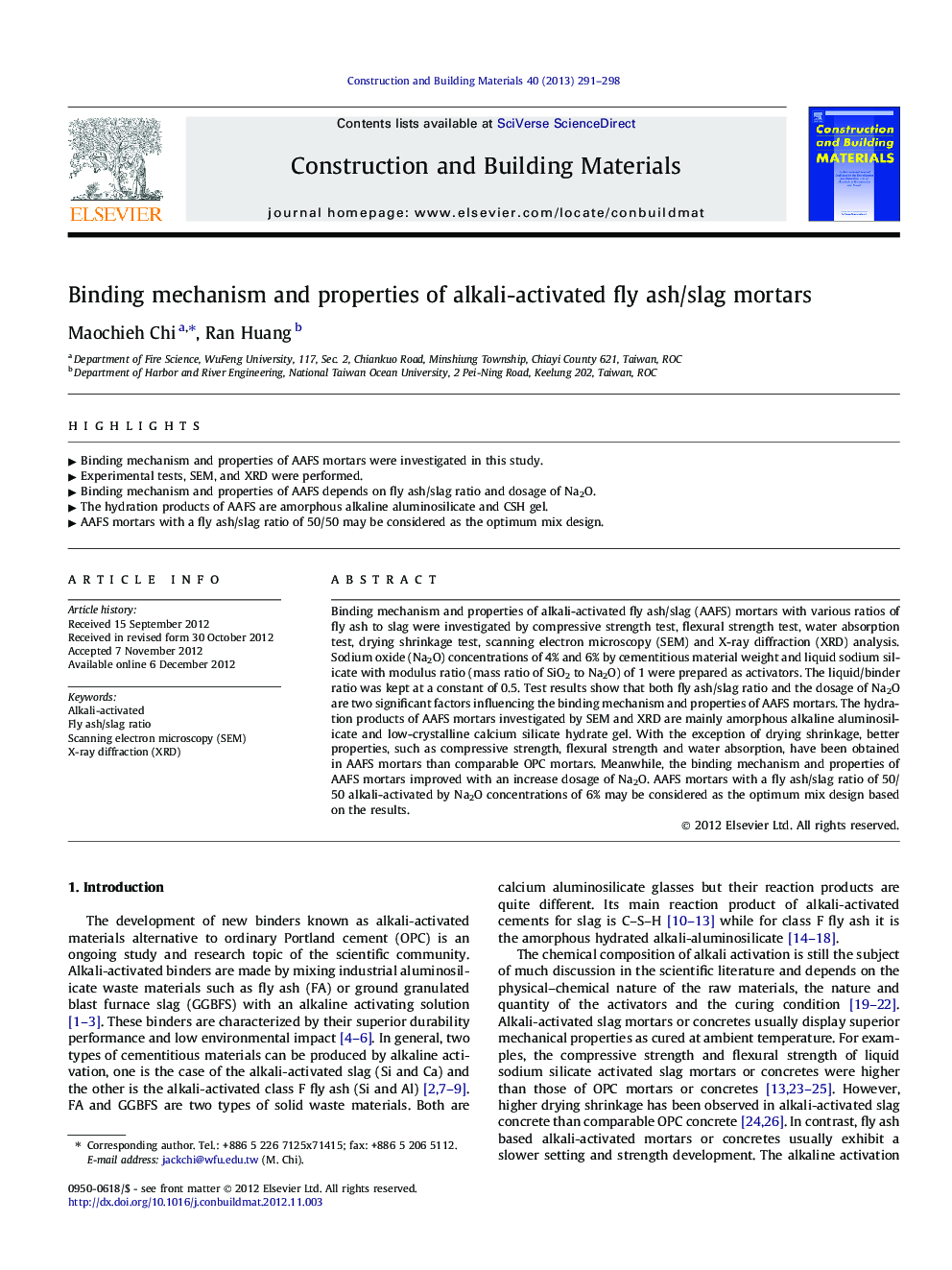| Article ID | Journal | Published Year | Pages | File Type |
|---|---|---|---|---|
| 258265 | Construction and Building Materials | 2013 | 8 Pages |
Binding mechanism and properties of alkali-activated fly ash/slag (AAFS) mortars with various ratios of fly ash to slag were investigated by compressive strength test, flexural strength test, water absorption test, drying shrinkage test, scanning electron microscopy (SEM) and X-ray diffraction (XRD) analysis. Sodium oxide (Na2O) concentrations of 4% and 6% by cementitious material weight and liquid sodium silicate with modulus ratio (mass ratio of SiO2 to Na2O) of 1 were prepared as activators. The liquid/binder ratio was kept at a constant of 0.5. Test results show that both fly ash/slag ratio and the dosage of Na2O are two significant factors influencing the binding mechanism and properties of AAFS mortars. The hydration products of AAFS mortars investigated by SEM and XRD are mainly amorphous alkaline aluminosilicate and low-crystalline calcium silicate hydrate gel. With the exception of drying shrinkage, better properties, such as compressive strength, flexural strength and water absorption, have been obtained in AAFS mortars than comparable OPC mortars. Meanwhile, the binding mechanism and properties of AAFS mortars improved with an increase dosage of Na2O. AAFS mortars with a fly ash/slag ratio of 50/50 alkali-activated by Na2O concentrations of 6% may be considered as the optimum mix design based on the results.
► Binding mechanism and properties of AAFS mortars were investigated in this study. ► Experimental tests, SEM, and XRD were performed. ► Binding mechanism and properties of AAFS depends on fly ash/slag ratio and dosage of Na2O. ► The hydration products of AAFS are amorphous alkaline aluminosilicate and CSH gel. ► AAFS mortars with a fly ash/slag ratio of 50/50 may be considered as the optimum mix design.
